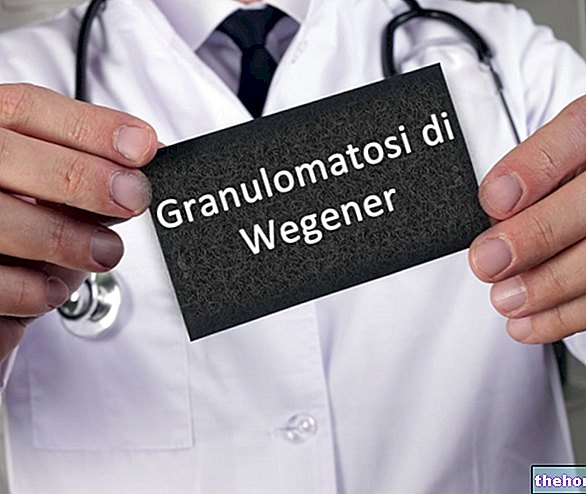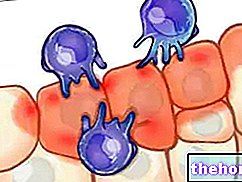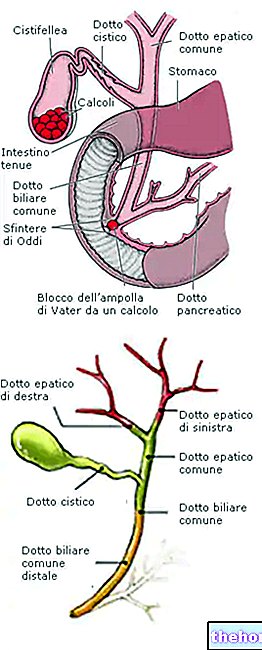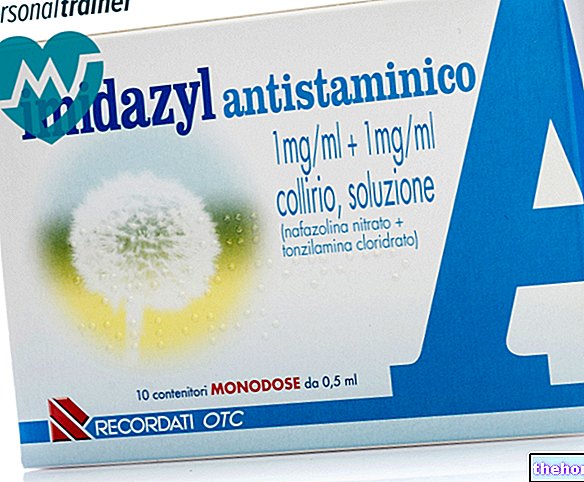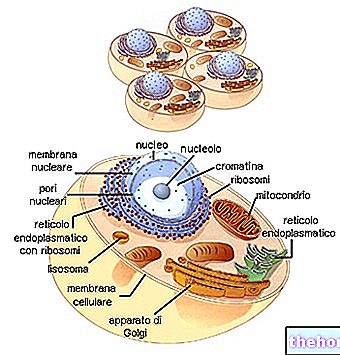Generalities and Classification
"Connectivitis" is a generic term used to indicate a set of different autoimmune pathologies, characterized by "inflammation of the connective tissue.
To be precise, some of the diseases classified as connectivitis also affect tissues other than connective tissue, such as muscle or epithelial. Therefore, in these cases, the term "connectivity" acquires an even broader and more generic meaning.
In any case, connectivitis can be divided into three macrogroups, according to the more or less defined symptomatology they are capable of causing. In this regard, we can distinguish:
- Differentiated or defined connectivities: group to which belong different pathologies characterized by a well-defined clinical picture.
- Undifferentiated connectivitis: characterized by a symptomatology that does not allow to identify a specific and well-defined form of connectivitis.
- Mixed connectivitis: characterized by the simultaneous presence of symptoms belonging to different types of autoimmune rheumatic diseases.
Differentiated connectivity
Differentiated (or defined, if you prefer) connectivitis include a group of pathologies characterized by particular and specific clinical manifestations, which allow a certain diagnosis to be made.
Among the best known pathologies belonging to the group of differentiated connectivitis, we remember:
- Systemic sclerosis (or scleroderma), characterized by symptoms such as thickening of the skin of the fingers, hands, arms and face, joint swelling, hair loss, heartburn, shortness of breath, skin xerosis, Raynaud's syndrome.
- Systemic lupus erythematosus, characterized by symptoms such as asthenia, fever, anorexia, myalgia, "butterfly" erythema, alopecia.
- Polymyositis, characterized by the appearance of asthenia, muscle atrophy and paralysis, weakness, joint and muscle pain, heartbeat, Raynaud's syndrome.
- Dermatomyositis, characterized by symptoms such as myalgia, muscle atrophy, muscle soreness, scleroderma, the appearance of red spots on the eyelids, face, back, hands and chest.
Other diseases that fall into the group of differentiated connectivitis are rheumatoid arthritis and Sjögren's syndrome.
In any case, for more information about these diseases, we recommend reading the dedicated articles already on this site.
Undifferentiated Connectivitis
Undifferentiated connectivitis is thus defined as it presents a set of clinical manifestations that are not sufficient to establish its exact typology; therefore, it is not possible to make a certain and well-defined diagnosis.
Undifferentiated connectivitis is usually not very symptomatic and not developmental, but it should not be underestimated for this. In fact, it may happen that the initially diagnosed undifferentiated connective tissue disease evolves over time into a well-defined form of connective tissue disease (differentiated connectivity). This happens because differentiated connective tissue diseases often have a subtle onset, accompanied by an unspecified symptomatology that does not allow immediate diagnosis.
In addition to being non-specific, the clinical manifestations of undifferentiated connectivity can vary from one patient to another. However, among the most common symptoms, we remember:
- Fever;
- Asthenia;
- Arthritis and arthralgia;
- Raynaud's syndrome;
- Pleurisy;
- Pericarditis;
- Skin manifestations;
- Xerophthalmia;
- Xerostomia;
- Peripheral neuropathy;
- Positivity to immunological tests for the detection of anti-nuclear antibodies (ANA).
Mixed Connectivitis
Mixed connectivity is a particular type of connectivity characterized by the appearance of clinical manifestations typical of various rheumatic pathologies (such as, for example, typical symptoms of systemic lupus erythematosus, scleroderma, etc.). Furthermore, in the case of mixed connective tissue disease, this mixed symptomatology is associated with the presence in the blood of high levels of a particular type of autoantibody: anti-U1-RNP antibodies.
Despite the varied symptoms with which this form of connectivity can present itself, among the main symptoms that can arise, we remember:
- Fever;
- Arthritis;
- Myositis;
- Raynaud's syndrome;
- Edema of the hands and fingers;
- Thickening of the skin;
- Vasculopathies;
- Manifestations at the pleural and pulmonary level;
- Cardiac manifestations;
- Skin manifestations of various types, such as rash, papules, purpura, erythema, etc.
Causes
As mentioned, connectivitis are pathologies of autoimmune origin, ie diseases in which the immune system of the affected individual generates autoantibodies that trigger abnormal immune responses towards the same organism.
Due to this abnormal immune attack, both functional and anatomical alterations are established in the affected district, area, organ and / or tissue.
What are the actual causes behind this mechanism has not yet been clarified. However, it is believed that the etiology of connectivitis may be multifactorial and may therefore originate from a set of factors, such as genetic, environmental, endocrine factors, etc.
Treatment
The treatment of connectivitis can vary according to the type of rheumatic disease presented by the patient.
Differentiated connectivitis are treated in a specific way according to the type of pathology that has affected the patient.
Mixed connectivitis is usually treated according to the clinical picture that presents itself and according to the "predominant" symptomatology that occurs in the individual.
Undifferentiated connectivitis, on the other hand, in the milder forms is mostly treated with anti-inflammatory and analgesic drugs. In the most severe forms, however, it may be necessary to resort to more powerful drugs, capable of interfering with the activity of the immune system.
However, it can be said that the main medicines used for the treatment of connective tissue disease are:
- NSAIDs (non-steroidal anti-inflammatory drugs), such as acetylsalicylic acid, naproxen and ibuprofen. These active ingredients - in addition to possessing anti-inflammatory activity - possess analgesic and antipyretic activities, therefore they can also be useful to counteract very common symptoms in connective tissue diseases, such as fever and pain.
- Steroid drugs, such as prednisone, betamethasone, methylprednisolone, or triamcinolone. Corticosteroids are drugs that can be administered both orally, topically (for the treatment of skin manifestations), and parenterally. They are active ingredients with a marked anti-inflammatory activity, exercised through the reduction of the autoimmune response.
- Immunosuppressants, such as methotrexate, thalidomide, cyclosporine or rituximab. As you can easily guess from their name, these active ingredients are used in the treatment of connective tissue disease as they are capable of suppressing the patient's immune system, thus slowing down the progress of the disease.
Naturally, the choice of active ingredients to be used in the treatment of the different forms and types of connective tissue disease is the sole and exclusive responsibility of the specialist doctor who is treating the patient. This doctor will assess, on a case-by-case basis, which is the therapeutic strategy that best suits each individual.

